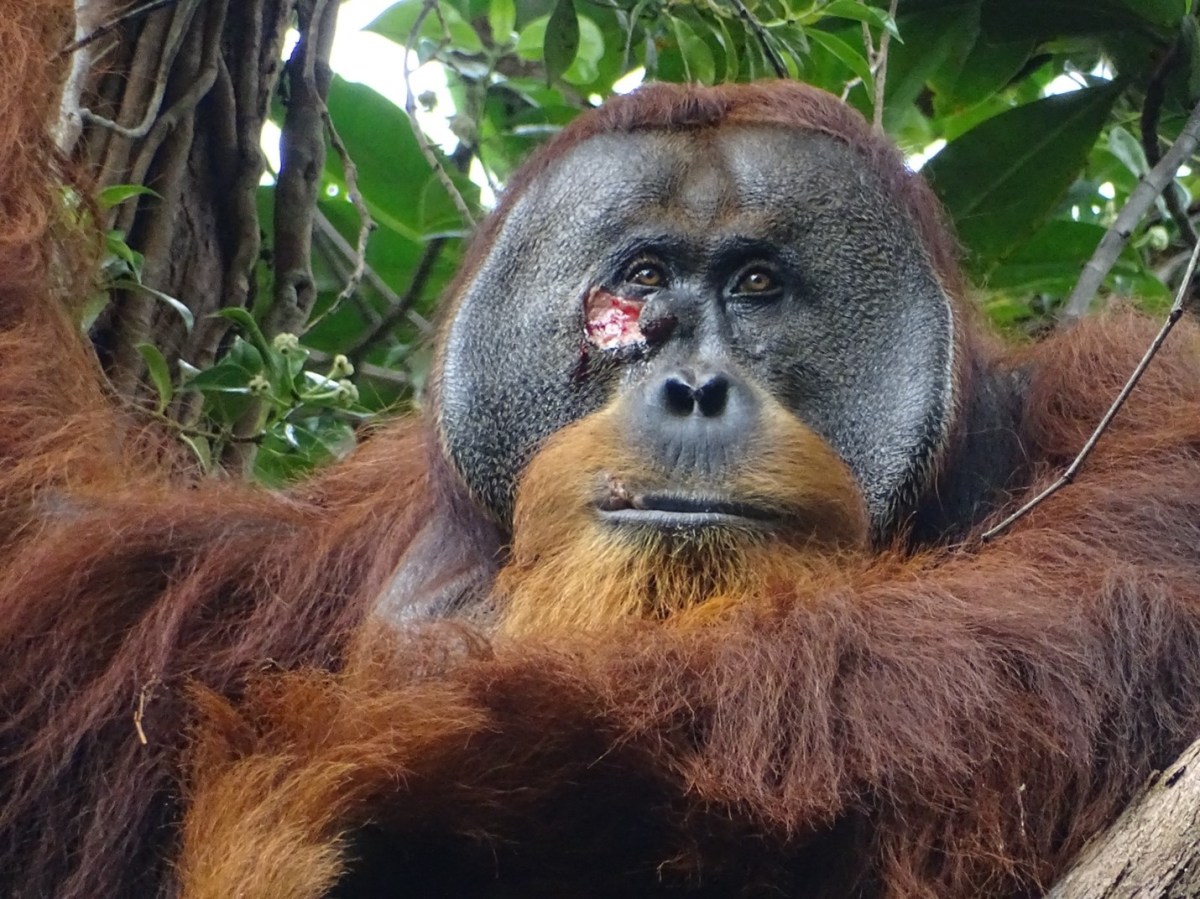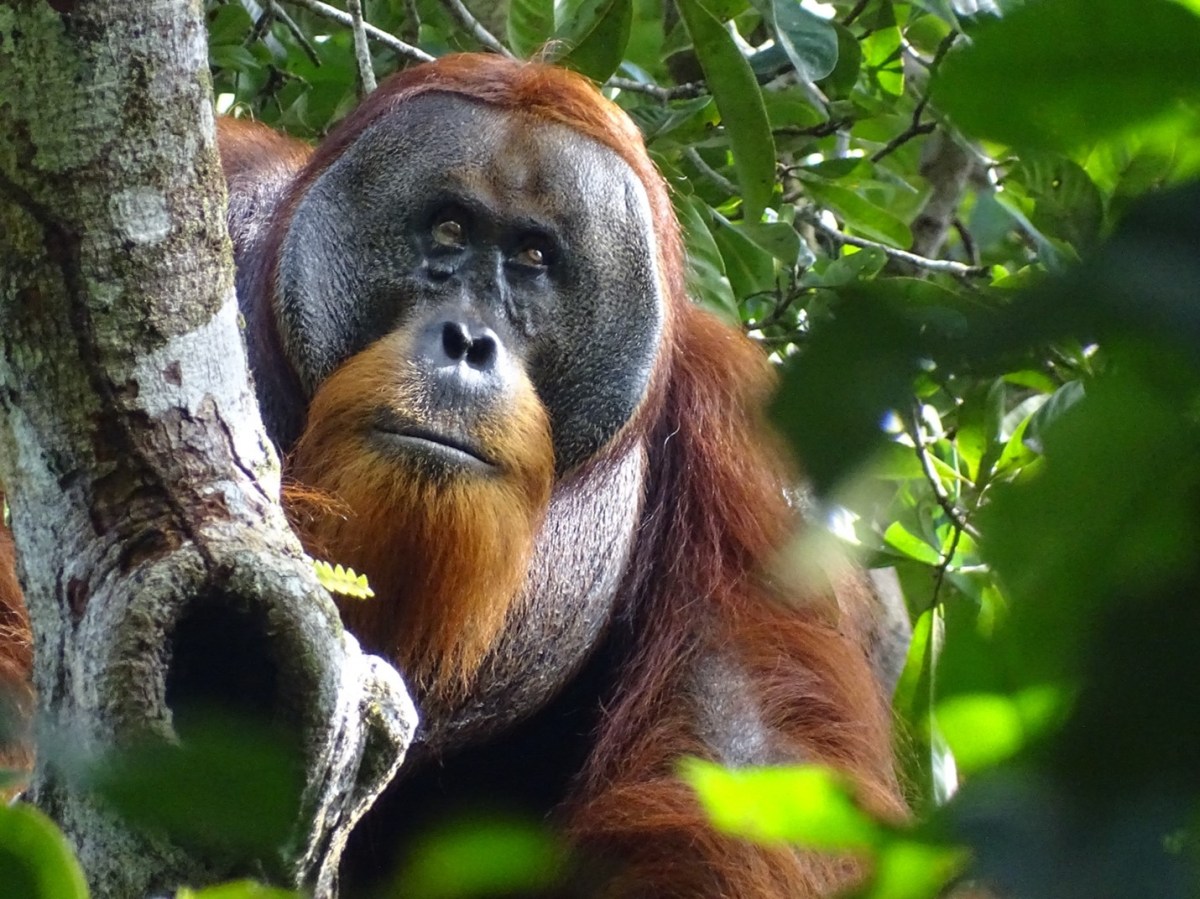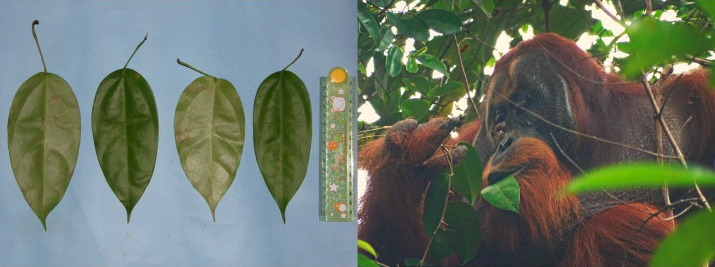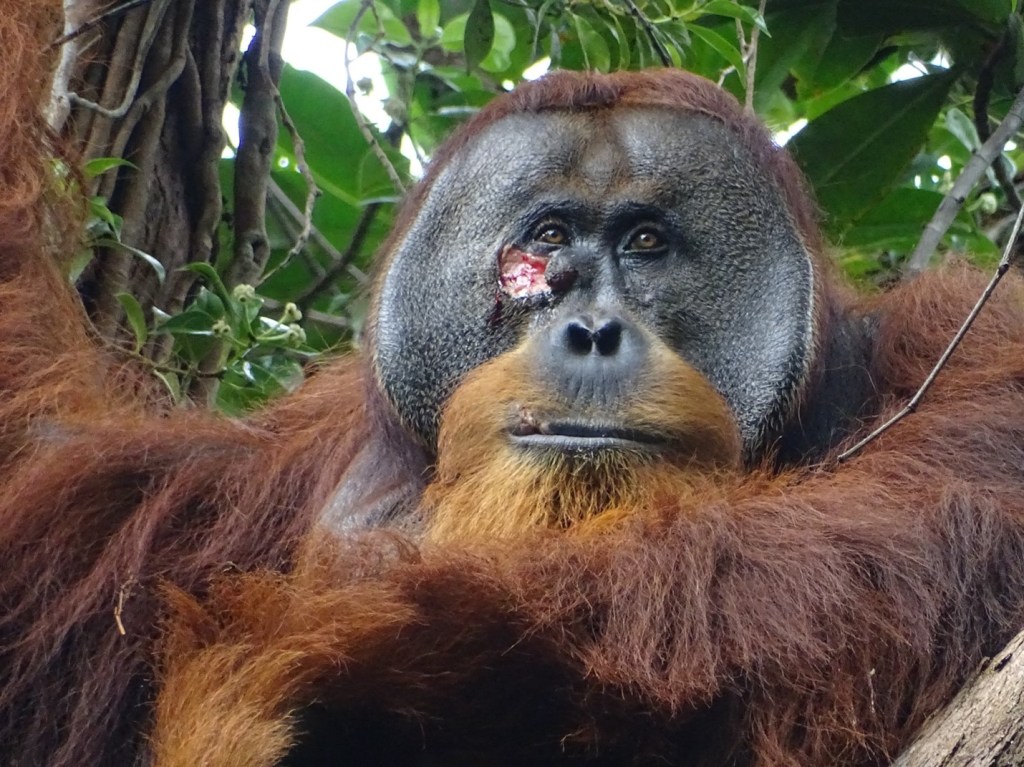In a groundbreaking study published by Springer Nature today, scientists have witnessed a wild Sumatran orangutan self-administering medication with a medicinal plant to a surface wound — the first such behaviour ever systematically documented in an animal.
The male orangutan, dubbed Rakus by researchers, was spotted in Indonesia’s Leuser Ecosystem chewing leaves and stems of the Akar Kuning plant (Fibraurea tinctoria) into a medicinal mash before deliberately applying it to a nasty gash on his cheek.

For seven minutes Rakus carefully applied the paste onto the open wound, covering the entire injury with a thick layer of chewed-up plant matter. He then continued to chew and swallow the Akar Kuning, consuming it for 30 minutes. In the following days, the research team noted that the wound never became infected and, within a week, had nearly healed completely.
This behaviour has thrilled researchers, as it provides the first solid evidence of a wild animal actively treating a wound with a plant known to have medicinal properties. Indigenous cultures across Southeast Asia have long used Akar Kuning as a traditional remedy for various ailments, including dysentery, diabetes, and malaria.

Recent pharmacological analyses have identified several potent compounds in the plant, including furano diterpenoids and protoberberine alkaloids, which have documented antibacterial, antifungal, anti-inflammatory, and antioxidant effects.
Experts believe these substances could have helped stave off infection in Rakus’ wound while reducing pain and inflammation to speed up healing. The fact that Rakus’ leafy application appeared very deliberate and repeated suggests it was no accident. He specifically targeted the wound, ignoring other body parts, and persisted with the treatment for an extended period.

Rakus’ apparent feat of botanical first aid has significant implications for our understanding of animal cognition and the depths of orangutan intelligence.
It also sheds new light on the evolution of medicinal behaviours in humans and our closest living relatives. Prior to this, a number of wild primate species had been observed swallowing and chewing medicinal plants, or rubbing such plants onto themselves — but never applying them to recent wounds. It’s worth noting that treatment to recent wounds in general has been observed before in chimpanzees in Central Africa — but this was with crushed-up insects, not medicinal plants.

With two distinct great ape species demonstrating self-medication in the wild using natural anti-inflammatories and antibiotics, scientists are reevaluating just how far back this ability may stretch in our shared lineage. Our ancient ancestors may have relied on the jungle pharmacy long before the first villages and apothecaries appeared.
The research posits there could exist a shared underlying mechanism for recognising and subsequently applying substances with medicinal properties on wounds that could go as far back as our last common ancestor.
Images: Supplied/Armas





